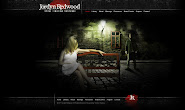Welcome, Heather!
When I started writing my Viking historical novel, I knew there would be battle scenes. After all, they’re Vikings, right?
And I knew I had a salty old sailor who was left behind to guard the camp, for mysterious reasons. He had a hidden talent, but what?
I decided this guy was the perfect berserker. If you’ve read anything about Vikings, you know these guys freaked out all their enemies because they were completely unpredictable (even to their fellow warriors!)
I read a little more on Wikipedia (it’s a great source of info on Vikings, but I try to double-check before plugging it into my novels). Wikipedia quoted Howard D. Fabing ("On Going Berserk: A Neurochemical Inquiry." Scientific Monthly. 83 [Nov. 1956]), describing the fury called berserkergang:
“This condition is said to have begun with shivering, chattering of the teeth, and chill in the body, and then the face swelled and changed its colour. With this was connected a great hot-headedness, which at last gave over into a great rage, under which they howled as wild animals, bit the edge of their shields, and cut down everything they met without discriminating between friend or foe. When this condition ceased, a great dulling of the mind and feebleness followed, which could last for one or several days.”
 |
| Amanita Muscaria |
Yes, I knew my guy was a berserker. But should I buy into the theory that berserkers were “doing ‘shrooms,” or eating poisonous mushrooms, precipitating their inexplicable behavior?
Wikipedia paraphrased Peter G. Foote and David M. Wilson (The Viking Achievement. London
“Modern scholars believe certain examples of berserker rage… have been induced voluntarily by the consumption of drugs such as the hallucinogenic mushroom Amanita Muscaria, commonly known as the fly agaric or fly Amanita, or massive amounts of alcohol. While such practices would fit in with ritual usages, other explanations for the berserker's madness have been put forward, including self-induced hysteria, epilepsy, mental illness or genetic flaws.”
Being a writer, I decided to choose the most illustrious reason for my guy’s strength—he ate some mushrooms that gave him super-powered strength (for a little while).
Then I had to read up on Amanita Muscaria—where does it grow? Would he have access to it, both in Greenland and at his camp, in upper North America ?
Wikipedia states that the mushrooms have been located in Sweden and Germany Greenland for me. Trade was vigorous at this time, so even if it wasn’t native to Greenland , it could be obtained.
Further, a type of this mushroom grows in Newfoundland
Even though Wikipedia states that the mushroom berserker theory might be “urban legend, or at best speculation that cannot be proven,” I decided to go with it. It worked for my story, and many things haven’t yet been proven about the Vikings (but time works wonders that way).
Could the Viking berserkers have been possessed? Sure. But given the documented hallucinogenic effects of the shrooms, compounded with the fact that Lithuanians, Sami and various other cultures used them, I figured Amanita Muscaria would add that special touch to my story.
I discussed all my mushroom theories with my dad, a family practice physician, before locking them into my novel. It was important not to let my imagination outweigh reality. Luckily, he thought it was a believable explanation.
I discussed all my mushroom theories with my dad, a family practice physician, before locking them into my novel. It was important not to let my imagination outweigh reality. Luckily, he thought it was a believable explanation.
So sometimes Wikipedia can answer those pressing historical fiction questions in a hurry. Just be sure the sources back up the information you glean.
What about you? What do you think was going on with those berserkers? Do you use Wikipedia often?
********************************************************************************
Heather Day Gilbert enjoys writing stories about authentic, believable marriages. Fifteen years of marriage to her sweet Yankee husband have given her some perspective, as well as eight years spent homeschooling her three children. Her historical fiction novel, God’s Daughter, is rooted in the Icelandic sagas. It tells the story of Gudrid Thorbjarnardottir, the first European woman to have a baby on North American soil. You can find out more at Heather’s blogspot: http://www.heatherdaygilbert.blogspot.com, or at her FB page: http://www.facebook.com/pages/Heather-Day-Gilbert/255797467834948. She’d also love to chat on twitter @vikingwritergal.


















Thanks so much for asking me to guest blog here, Jordyn! I had so much fun writing this. Sometimes research can be fun!
ReplyDeleteI've also read that it could've been ergot poisoning... traditionally due to the ingestion of the alkaloids produced by the Claviceps purpurea fungus which infects rye and other cereals. It is also known as ergotoxicosis, ergot poisoning and Saint Anthony's Fire. Ergot poisoning is a proposed explanation of bewitchment.
ReplyDeleteOr maybe they were just bored.
Yes, I definitely have Wikipedia on speed-click. As well as Google Earth. I use all real locations in my novels, so Google Earth is a great resource when I want to virtually experience a certain environ. Do you use it?
ReplyDeleteI've used Google Earth a lot for my novel. It's amazing what you can find on streetview. I was location scouting in Los Angeles, and (actually right by one of the places I used) there was a guy getting arrested!
DeleteWoah, Bethany, I've never tried Google earth! Will have to check it out! Usually I type in my place name and pull up photos of said locale. And Michelle, I know that's a plausible explanation too--I hadn't read of that one yet. If they WERE bored, those berserkers surely brought the DRAMA! Ha!
ReplyDeleteWOW, sounds like you had your work cut out for you. Funny that I have read viking novels before but never heard about these shrooms!
ReplyDeleteGreat job researching. Can't wait to read your novel.
Thanks so much, TC! It was a theory I had to pursue for my salty old sailor!
ReplyDeleteI love Wikipedia! I use it all the time in my research, but I agree, you have to make sure that Wiki is using a credible source.
ReplyDeleteVikings! I live in central Minnesota not far from the Runestone in Alexandria, MN that has been a point of controversy for many years. The stone was found in a man's field and is supposed to be left by Vikings. There is a museum in Alexandria dedicated to the stone and I recently saw that "History Detectives" was doing a show on it - but didn't get to see the show. I wonder what they discovered... Maybe I'll look it up on Wikipedia!
Ha! Yes, look that one up, Gabrielle! So cool--I've heard of that runestone and I BELIEVE that might be one they proved to be fake? But let me know, if not.
ReplyDeleteSometimes I wish I could go to Minnesota just to meet all those real-life Viking descendants up there! But I really want to head over to Newfoundland and see the L'Anse Aux Meadows re-created Viking longhouse. So glad you enjoy Viking lore, too!
Heather: Awesome post and as a self professed research nerd-- I love research and odd facts and turning them into stories. Had a lot to do with my first novel. I really can get sidetracked by research. Really do love it!
ReplyDeleteMichelle: Robin Cook did a book a long time ago called Acceptable Risk that dealth with ergot poisoning and how it might have tied into the Salem Witch Trials. You might find it interesting.
And everyone mentioning Google Earth-- I too think this is fantastic in a research not privacy issue kind of creepy way. To one author I suggested she Google a city morgue address so it would better help her describe it. I do think it can be a useful tool.
Great comments everyone! Such fun...
Heather, this is so fascinating. Way back in the early years of the Internet, I came across a site that approached the berserkgangr as a type of internal martial art. He's updated it a bit (at http://uppsalawayland.tripod.com/) and refined his theories.
ReplyDeleteAs for the Kensington Runestone, Dr. Richard Nielsen has uncovered linguistic evidence that moves it farther into the 'authentic' column. He matched the runestones used to official court, legal and church documents from Scandinavia in the same era. The MN Historical Society relies on outdated assumptions from 1920s experts to classify it as 'fake'. Culturally, there is nothing that would have stopped the Vikings from going inland after reaching Newfoundland. Add the Heavener, OK runestone to it, and the evidence starts piling up.
Thanks for an interesting blog post!
Those are the kinds of mushrooms you'd expect to find fairies dancing around. :D
ReplyDeleteI remember learning a lot of this stuff when I did some research on Viking. I thought it sounded believable. Glad to hear your father thought so too.
Thanks so much for having me over, Jordyn! Love your blog, and I mean I LOVE it b/c I'm fascinated by science. Would've been a doctor if only my Math skills were up to the par of my English skills! Ha. And Shandiss, so glad you enjoyed this, too! I'll have to check up on that internal martial art...I could see that, but it would take remarkable concentration to bite pieces off shields. And Stina, I thought the same thing! The mushrooms are pretty, but they also look pretty poisonous!
ReplyDeleteWow, Shandiss, just read that article. So he leans toward the shamanism aspects of it. I have no doubt that was probably involved, too, but for my purposes I wanted to stick w/the shrooms and the more physiological causes (and cover addictions, too).
ReplyDeleteIt sounds like you do really thorough research on your novels. :) I've never heard of berserkers before--yet another reason never to pick wild mushrooms. LOL.
ReplyDeleteI use Wikipedia if I need quick information since it's usually accurate. But I won't cite it as a source, though I sometimes check the links at the bottom of the articles for information.
The Golden Eagle
The Eagle's Aerial Perspective
Perhaps the picture of the mushrooms often have fairies around them becuase the people have been consuming the mushrooms!!
ReplyDeleteHeather, that's why I love 'mucking aboot' in the Norse cultures. They were stubbornly preliterate for so long, even as they built complex cultures, that writers have a mind-boggling array of options when setting up stories. (I grew up around plenty of 2nd generation Norwegian, Swedish and German farmers, and 'stubborn' is a very mild word to describe them when they've made up their minds about something. Far easier to move a glacier than persuade them otherwise!)
ReplyDeleteSo cool, Shandiss! I guess I'm 3rd generation Norwegian, as my great-grandpa was, and my great-grandma was a Swedish Sami reindeer herder. Now I know where I get this determined streak. Oh, well, it serves me well as a writer in this publishing climate! Grin.
ReplyDeleteAnd Jordyn, I was LOL-ing here! Yes, those fairy rings...gotta watch out when you start seeing those! Hee.